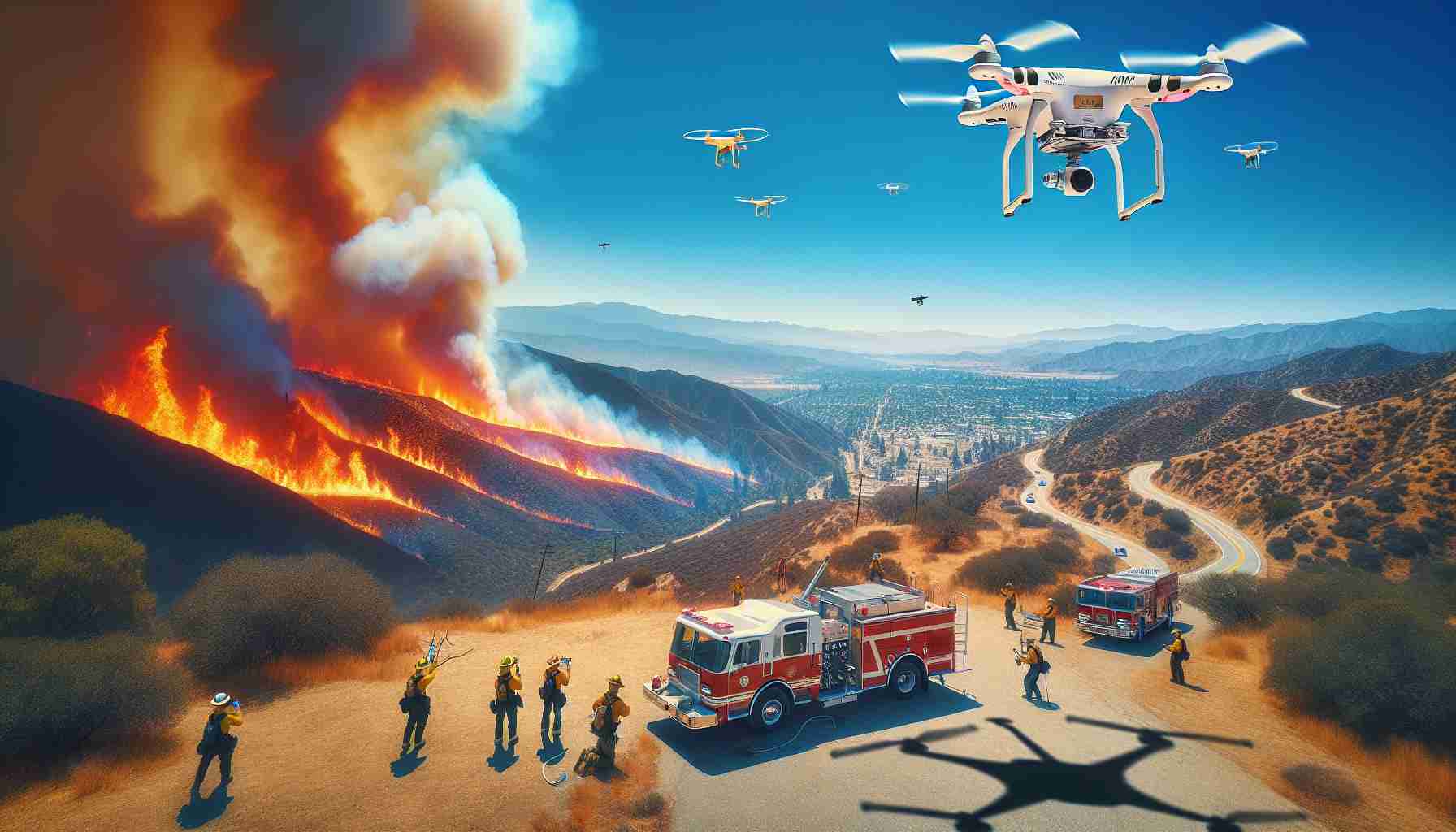- San Bernardino is pioneering a new firefighting strategy using drones as first responders in wildfire scenarios.
- Drones swiftly gather and transmit crucial real-time data such as fire size, speed, and direction, aiding command centers.
- This early intelligence allows for refined strategies and safer routes for firefighters on the ground.
- The program highlights the potential for technology to enhance and support human efforts in emergency situations.
- This innovative approach marks a significant evolution in combating wildfires, blending technology with traditional firefighting techniques.
Beneath California’s endless sky, a revolutionary change is taking flight in San Bernardino. In a region where wildfires rage and embers dance in unpredictable patterns, a new strategy emerges—one that feels plucked from the pages of science fiction. Firefighters have introduced a remarkable pilot program: deploying drones as first responders.
Imagine the scene. Before traditional engines rumble to life, drones zip over blazing landscapes, transmitting crucial data to command centers below. These nimble machines soar above the chaos, capturing real-time footage of the roaring inferno. Their cameras, sharp as a hawk’s eye, relay vital information—fire size, speed, and direction—that equips ground crews with a decisive advantage long before they roar onto the scene.
As smoke drifts into the horizon, the benefits crystallize. The drones offer an early glimpse into the beast’s heart, allowing strategies to be finely tuned, potential obstacles identified, and a safer path carved for firefighters who risk their lives in the battle against nature’s wrath.
This initiative underscores a critical point: technology, when harnessed thoughtfully, can amplify human efforts. In San Bernardino, the intersection of innovation and emergency response is redefining how we combat one of our toughest adversaries—wildfires.
A new era in firefighting has dawned, painting a vivid picture of resilience and ingenuity. With every drone that ascends, the skies of San Bernardino become not just a battleground, but a canvas where technology and valor coalesce.
Drones in Firefighting: A Revolutionary Shift in Battling Wildfires
Pros and Cons of Using Drones in Firefighting
Pros:
1. Quick Response Time: Drones can be deployed rapidly, providing early eyes in the sky before traditional firefighting efforts begin.
2. Enhanced Safety: They gather critical data without putting human lives in immediate danger, reducing risks for ground crews.
3. Detailed Data Collection: High-quality cameras and sensors allow drones to capture real-time data on fire size, speed, and direction, enabling better strategic planning.
4. Cost-Effective: Operating drones is generally cheaper than deploying manned aircraft, making this approach economically feasible in the long run.
Cons:
1. Limited Flight Time: Most drones have a limited battery life, restricting the duration they can remain operational in the field.
2. Weather Sensitivity: Adverse weather conditions, like high winds or heavy smoke, can limit a drone’s effectiveness.
3. Privacy Concerns: Drones flying overhead might raise privacy issues for locals, necessitating careful regulation and communication.
4. Regulatory Challenges: Navigating federal aviation laws and getting clearance for drone operations can be complex and time-consuming.
Market Forecasts and Trends
The market for drones in the firefighting sector is projecting robust growth. With increasing incidents of wildfires worldwide, the integration of drone technology into emergency response strategies is anticipated to become standard practice.
Recent Innovations
1. Thermal Imaging: Newer drones are equipped with thermal cameras to detect fires that are not visible to the naked eye.
2. Swarm Technology: A developing field where multiple drones work simultaneously, providing comprehensive surveillance over vast areas.
Limitations and Challenges
Despite the advantages, the use of drones in firefighting is not without limitations. Battery life, payload capacity, and the ability to operate in poor visibility conditions are some of the current challenges that developers and manufacturers are actively working to overcome.
Real-life Use Cases
– California Wildfires: Drones have been extensively used in monitoring and assessing wildfires, providing invaluable data that has led to more effective ground tactics.
– Australian Bushfires: Emergency services have deployed drones for reconnaissance and to track fire movements in remote areas.
Security Aspects
Security and interference, such as the risk of cyber attacks on drones, is a concern that needs addressing to ensure the integrity and reliability of data collected during firefighting operations.
Sustainability
By providing precise data and insights, drones help reduce the environmental impact of traditional firefighting methods, such as the use of heavy aircraft, which can be both costly and carbon-intensive.
Future Predictions
As technology advances, we may see drones equipped with firefighting capabilities, like dispensing fire retardants, becoming a common sight.
For more information on drones and their applications, check the following link: Drone Industry Insights.
Frequently Asked Questions:
How are drones controlled in firefighting situations?
Drones are typically operated by trained personnel using remote control systems. These operators are often based in command centers, assessing real-time data to guide firefighting operations.
Can drones fight fires directly?
Currently, most firefighting drones are used for observation and data collection. However, research is ongoing to develop drones capable of direct firefighting, such as carrying and releasing fire retardants.
What regulations must be followed when using drones in wildfire management?
Drones used in firefighting must comply with FAA regulations, which may include getting specific authorizations for operating in emergency zones and ensuring no interference with manned aircraft operations.




















